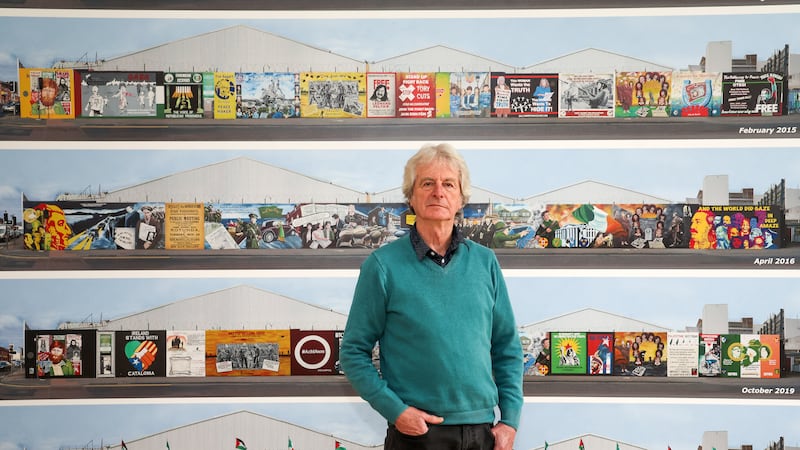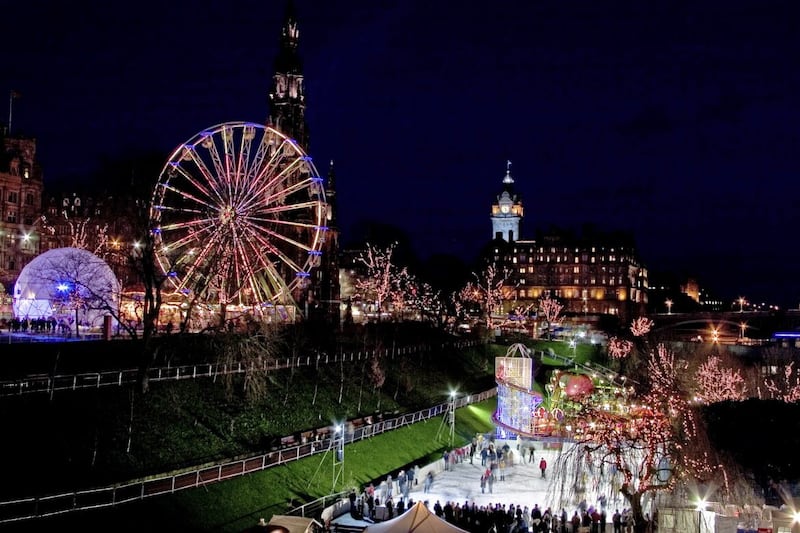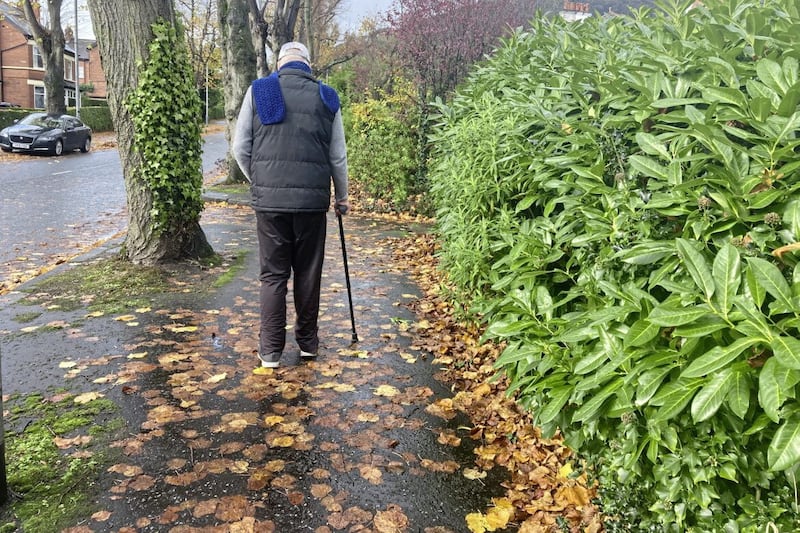IN 1997 the fearless Times journalist Martin Fletcher was sent from Washington to Belfast to report on The Troubles, “… from the free world to dank, dreary, claustrophobic Belfast”.
As a result of his experiences he returned to write Silver Linings – Travels Around Northern Ireland, a fascinating journey during which he had his eyes opened to the complexities and beauties of the place and its people; he calls it the garden of good and evil.
As it was written in 2000 and has been republished nine times, it's an interesting look back at a time before there was the Titanic Experience – no restructured Gobbins paths either, defunct when Martin visited: “I somehow doubted they would ever be walked again.” It was a time when one telephone book satisfied the whole population.
His first journey is along the north coast where he writes “the narrow ribbon of road hugs the shore between towering limestone cliffs and steep wooded hills on one side and wonderful expanse of flat blue waters on the other.” He talks of clouds scudding across the sky trailing short sharp showers in their wake but this merely enhanced the natural drama.
:: Upside down in Antrim
Glenarm attracts him and he talks of the 11th Earl of Antrim, known as The Buzzard, and his wish to be buried on the hilltop he loved and insistence that he should be laid to rest upright so he could continue to enjoy the distant view of Scotland. Apparently the pallbearers were so exhausted when they got to the top of the hill they planted the coffin upside down.
That’s the beauty of this book. No matter where you live in Northern Ireland there is something relating to your countryside and if you don’t live here it’s a wonderful journey to take.
When visiting the birthplace of the Titanic there was only a large concrete protrusion that divided the two slipways and rusting rails, a scene of decay and dereliction, not even a plaque or a marker.
“Had Belfast been an American city it would have cashed in nightly on the Titanic. There would be a Titanic museum and Titanic theme park, souvenir shops selling Titanic mugs, models and T-shirts bearing slogans like ‘Do you Ever Get That Sinking Feeling?’
There are many major changes since Martin put pen to paper. In 2000 Northern Ireland he observes that strangers meet and probe to ascertain the religion of the other from their name, address or where they were educated “…only in Northern Ireland could a union between a man and a woman of the same colour, nationality and Christian faith be called a ‘mixed marriage’.
He meets up with James Galway who considers the Troubles ‘ridiculous’, believes it is high time Ireland was reunited and insists the people have to put the past behind them. “Hating occupies part of your mind,” Galway says. “If you hate this guy or that guy, every day they are renting space in our head and not even paying for it.”
Fletcher travels through Co Down knocking on the doors of the grand houses of the aristocracy and visiting tiny dwellings off the beaten track, always finding a cup of tea and a story. Contrast that with the border areas through Newry – not yet a city – and on to south Armagh where he met up with the tourism officer in Crossmaglen who took the author on a tour with the mix of the beauty of Slieve Gullion, the fairy thorns, two new golf courses, the Cardinal O Fiaich heritage centre and much traumatic evidence of the Troubles.
He found the same hospitality as I did when I was reporting from Forkhill; Martin discovered that the people of Northern Ireland are a unique breed, the good far outweighing the bad.
:: A harrowing journey
Travelling through Dungiven, Claudy and Strabane, is a history lesson of the times, talking to the people who remain, their tragic memories and their awful experiences but always something positive, the reader is left mesmerised with the details.
Of course Derry/Londonderry is a jewel in the crown of this narrative, “...both Protestants and Catholics are immensely proud of Londonderry. They also like to point out that it was a city when Belfast was a mudflat”.
In the chapter Westward Bound, he discovers the awful details of the siege of 1689 when 30,000 settlers huddled inside the walls for 105 days and were “reduced to eating rats which were selling for a shilling each and dogs which were selling for half a crown”.
He brings us up to date via the Second World War, in and out of the shirt factories, hymn writer Mrs Cecil Frances Alexander, marches and riots and President Bill Clinton. In Omagh he talks to bomb surviver Donna Marie McGillion, he goes poaching and attends a cock fight, up the Shankill and down the Falls, tries to track down Republican Thomas ‘Slab' Murphy without success.
There’s so much that is new to me. Martin takes me places I didn’t know existed, a history I was unfamiliar with, and his descriptive skills are certainly a silver lining during his travels around our beautiful part of the world. You could describe this book as a page turner and in these days of being more housebound than usual, well worth while getting your hands on.
His final words. "I remember what an American diplomat had once told me:, ‘Northern Ireland was like malaria’, he said. ‘Once it’s in your blood stream you never get rid of it.'"
So does he come back? “I come over as often as I can,” he told me. “Cycled from Belfast to Derry around the Antrim coast last time!” It’s in his blood.
:: Published by Abacus Books. Available in bookshops and online.
:: Green Fingers
I’m fascinated by Stephen Watson’s garden in his nightly BBC sports reports from home. He sits at the window with at first a fairly sparse spring garden but how it has flourished. It’s worthy of an award. But who has the green fingers?









